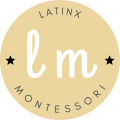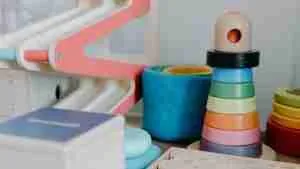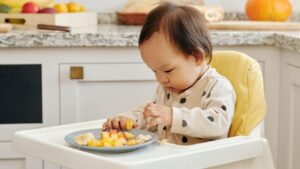
Create A Montessori Playroom: 11 Proven Steps
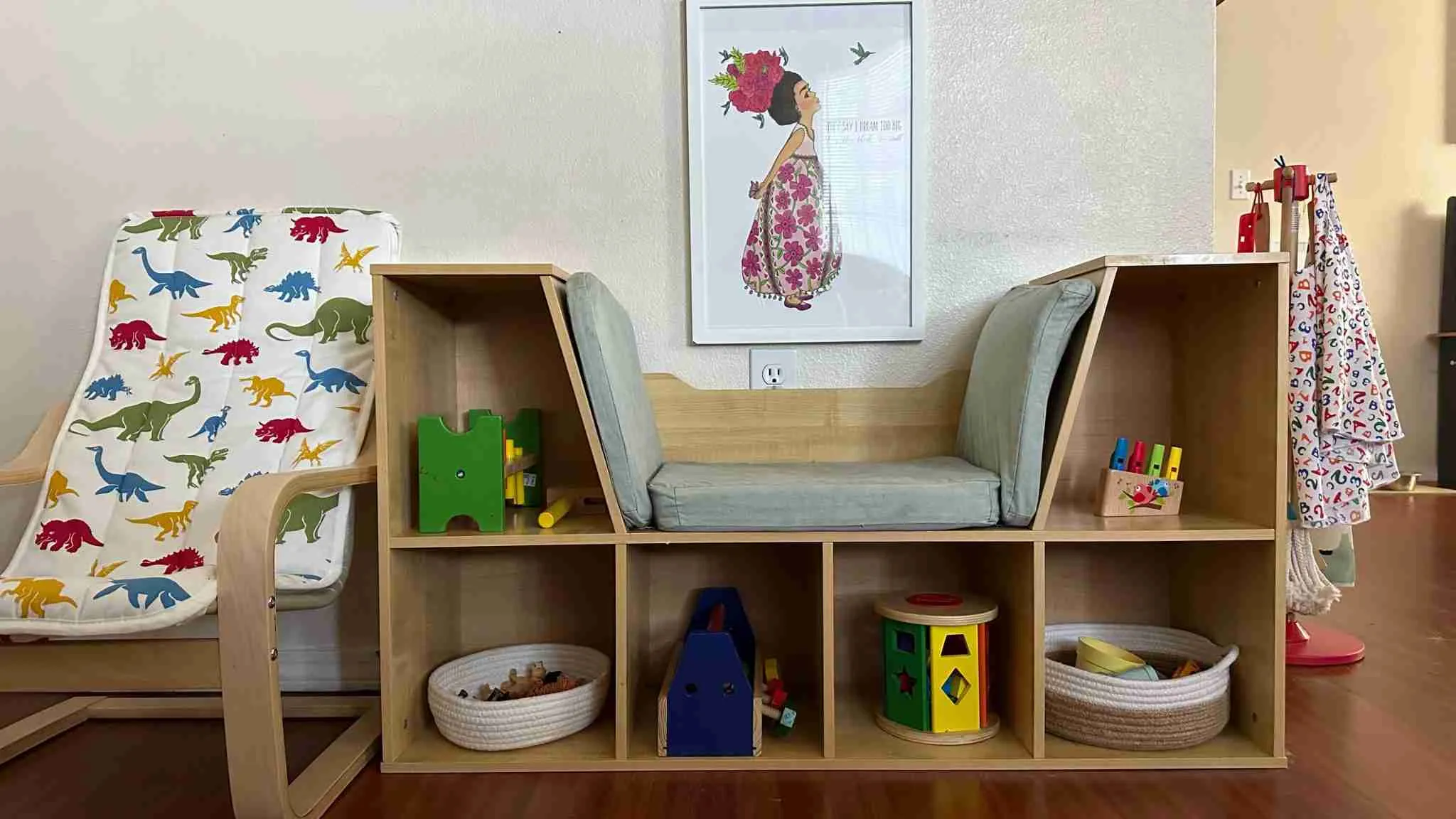
*Disclosure: I only recommend products I would use myself and all opinions expressed here are our own. This post may contain affiliate links that at no additional cost to you, I may earn a small commission. Thank you for your support!
Share this post
What is a Montessori playroom?
A Montessori playroom is a simple space for your child with a few age-appropriate toys and materials to encourage independence, concentration, and critical thinking.
Your child will thrive when you create a space that is tailor-made for them and this includes setting up Montessori furniture that is at their eye level.
We carefully created a Montessori playroom for our daughter that allowed her to explore, discover, and develop at her own pace.
We are going to share with you how we created this space so you can create a similar playroom for your child.
In essence, a developmentally appropriate Montessori playroom can include the following:
Child-centered design: A space thoughtfully designed for your child’s needs and interests.
Simple space: A clutter-free room with carefully chosen materials.
Natural materials: Toys and items made from wood instead of plastic.
Open shelves: Easy-access shelves for toys and materials to promote independence.
Rotating toys: Periodically rotate toys to keep your child engaged.
Child-sized furniture: Tables and chairs designed for your child’s size.
Practical life activities: Materials for pouring, cleaning, food preparation, and more to develop skills.
Art and creativity corner: A space for art supplies and self-expression.
Montessori learning materials: Montessori toys that are appropriate for your child’s age.
Reading nook: A cozy spot filled with age-appropriate books.
- Nature-inspired elements: Natural light, plants, and organic elements to connect with nature.
Let’s discuss these points in detail. I will give you examples of how we created our Montessori playroom which greatly benefited our daughter.
1. Child-centered design: a space for your curious child
I want you to imagine a space that’s tailor-made for your child, where everything is within their reach.
This means thinking and seeing everything at your child’s level – literally!
For our playroom, we started by arranging furniture and materials at our child’s eye level. This allowed her to access her toys and activities without needing help from us.
We had low shelves where she could easily see and reach her toys, and we kept her favorite learning materials within her grasp.
You also have to consider your child’s interests and needs and not just add any toy that looks cute and fun.
For example, if your little one loves art, set up an art station with accessible art supplies and paper.
If they enjoy reading, make a cozy reading nook with a small bookshelf and a selection of age-appropriate books.
Always follow your child’s interests!
2. Simple space: the Montessori ‘less is more’ approach
We are firm believers in “less is more,” so we applied this philosophy to create our Montessori playroom.
We decided to keep it simple with a few toys and materials. This might seem counterintuitive, but you should think about quality over quantity when you create your Montessori playroom.
We carefully selected toys and materials that were not just fun but also educational. Fewer options meant our child could focus more and explore each item in depth.
We found that our child was more engaged in purposeful play when she had limited materials to play with.
Plus, it helped us keep our Montessori playroom tidy, and our daughter also learned to put her toys away after playing.
3. Natural materials to embrace the beauty of nature
We opted for toys and items made from natural materials such as wood instead of plastic whenever possible.
To be completely transparent, we have some plastic materials but are very minimal.
We chose wooden materials because they provided a sensory-rich environment and promoted a stronger connection with the outdoors.
Natural materials have a unique texture that appeals to our child’s senses. For example, wooden blocks and Pikler triangles offered a tactile experience that plastic couldn’t match.
4. Open shelves to empower independence
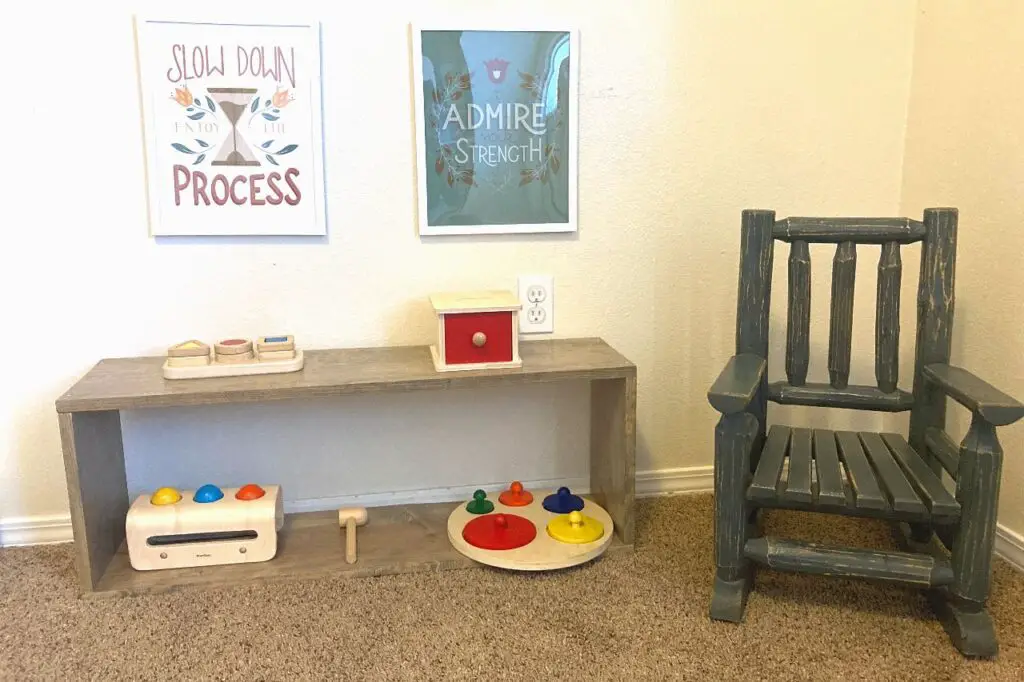
In the Montessori philosophy, open shelves improve your child’s independence and I encourage you to use them when you create your Montessori playroom.
Put simply, your child can access their toys and materials effortlessly and independently.
Our child did not need our assistance to get her toys and learning materials. She simply chose what she wanted to play with.
Having everything in plain view also promoted organization. Our child quickly learned where everything belonged and how to keep things organized.
5. Rotating toys to keep your child engaged
Your child will never get bored as long as you keep their curious mind engaged. And this is why it is important to rotate toys.
The concept is simple but effective. We created a rotating system to add and remove toys so our daughter was always engaged in her activities.
For example, we would have a few Montessori toys like building blocks and a peg board available for a few weeks, and then we would switch them with another set of toys.
We usually kept about 5 toys on her Montessori shelf at a time. This works because our daughter is always engaged and does not get overstimulated.
Toy rotation also encouraged creativity. With fewer toys available, our daughter often found new ways to use them, and this led to richer and more imaginative play.
6. Child-sized furniture
We already talked about the Montessori shelf but there is more child-sized furniture you need to add to your Montessori playroom like tables and chairs.
A small bookshelf, a weaning table, or a small chalkboard gives your child easy access to practical life activities.
Child-sized furniture promotes independence and confidence and gives them a sense of ownership over their playroom.
Our daughter spent more time engaging with activities and materials when everything was within her reach.
7. Practical life activities
Practical life activities are like planting the seeds of lifelong skills and confidence.
Activities like pouring, cleaning, and food preparation are not just play but essential life lessons.
We set up a weaning table for pouring activities, washing vegetables, or even cleaning up after a meal.
Our daughter also helps us clean and she has a great time doing it so. We got her this cleaning set so she can be more engaged in this practical life activity.
8. Art and creativity corner
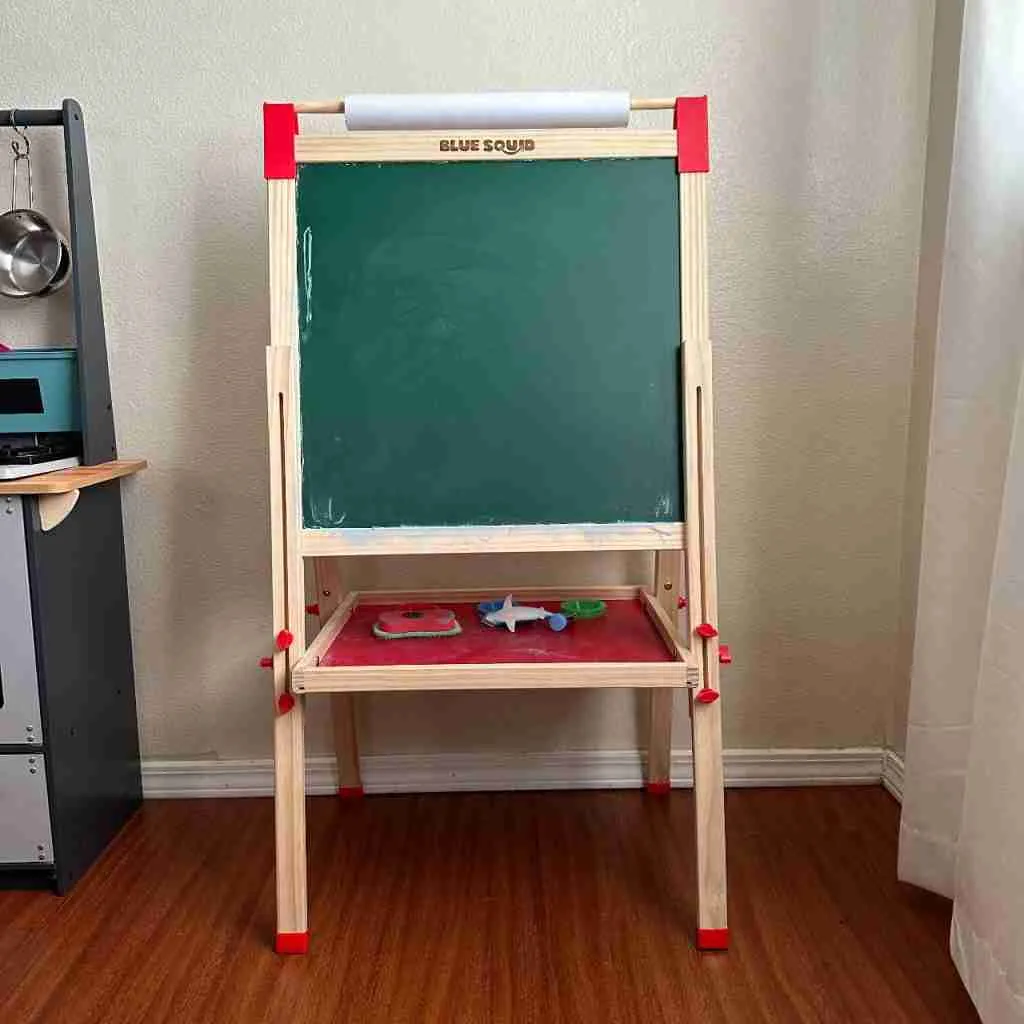
Our daughter loves to draw, and adding a chalkboard to her Montessori playroom was a no-brainer.
We included art supplies, paper, and chalk so our daughter could unleash her creativity without boundaries.
These items are essential for your child’s self-expression and creativity and they can spend hours drawing, painting, and crafting.
You will see their imagination improve as they create masterpieces in their own time and at their own pace.
9. Montessori learning materials
This is where you have to think about providing your child with child development tools and materials and not just toys that are pure entertainment.
Pikler triangles, balance beams, or sorting trays aren’t just toys, they’re tools for exploration and discovery.
For example, the balance beams helped our daughter improve her confidence and balance, which then gave her more confidence to climb tall structures at the park.
10. Reading nook
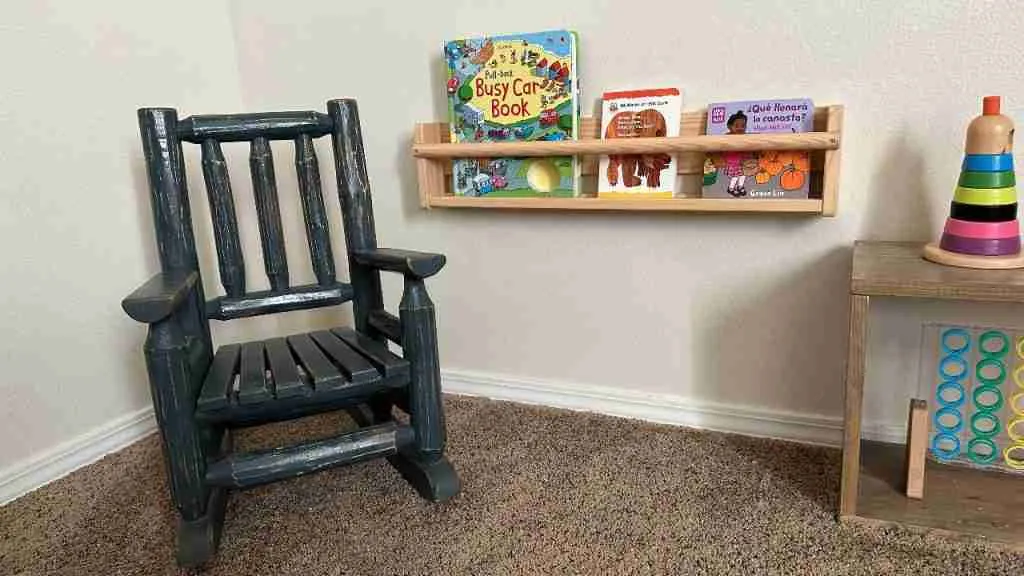
Reading is a huge part of our lives and we wanted to share our interest in reading with our daughter.
We have a small rocking chair and bookshelf with age-appropriate books. When it is time to read, our daughter chooses one of her books and sits on her chair to read.
Granted, she does not know how to read yet but she describes what is happening in the illustrations.
We noticed that the more accessible and inviting books were, the more our child developed a natural love for reading.
11. Nature-inspired elements
Small plants made our Montessori playroom more inviting and cozy. One of the biggest benefits of having plants is that your child will learn how to care for living things.
It’s a great opportunity for your child to water plants, watch them grow, and learn about nature in a hands-on way.
Natural materials like wooden furniture and natural textures added a sensory experience to the room.
Our child could feel, touch, and interact with these materials, connecting with the tactile side of nature.
This simple addition to your Montessori playroom will nurture an appreciation for the world around your child and the importance of taking care of the environment.
Where to buy Montessori toys and furniture
I recommend you buy Montessori toys from My Monte Home, Montessori and Me, and Lovevery.
These toys align with the Montessori philosophy and offer the greatest developmental benefit for your child.
You can use my discount code LATINXMONTESSORI at My Monte Home and Montessori and Me to save 10% on your order and you could also get FREE SHIPPING!
You can also find Montessori-inspired toys on Guidecraft, Hape, and Ten Little.
For the best and highest-quality Montessori furniture, I recommend you shop on Sprout Kids.
They are a well-known brand in the Montessori world and you won’t be disappointed by the quality of their products.
Modify your Montessori playroom for different age groups
Make sure to create and modify your Montessori playroom depending on the age of your child.
For example, a newborn and infant need materials that promote their senses while a toddler can begin playing with toys that improve their balance, coordination, and independence.
If you need some help, my article about Montessori toys by age can give you a good start.
Adapting the playroom as your child grows is a key to Montessori success. It ensures that the space continues to engage, educate, and inspire your child as they develop.
What to do next?
These are 11 proven steps to create a Montessori playroom. This child-centered space fosters independence, exploration, and a lifelong love for learning.
If you are ready to create or modify your child’s playroom, make sure to go to My Monte Home, Montessori and Me, and Sprout Kids for the best Montessori toys and furniture.
Happy parenting!

Hello, I am Leslie. I am on a mission to help you support the growth and development of your child. With the right tools and proper guidance, you can navigate parenthood with confidence and assertion! My goal is to equip you with knowledge to help you construct a strong foundation for your child’s life.
Suggested articles
You May Also Like
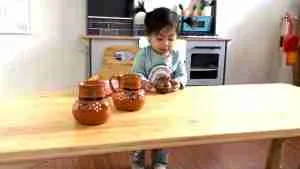
What Is A Weaning Table? 7 Reasons Why You Need One
A weaning table is a child-sized table that fosters independence and self-feeding in your infant or toddler. Your child will learn how to set the table, clean up after themselves, and learn table manners.
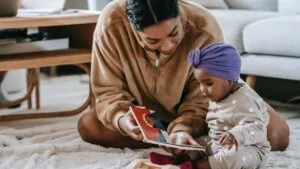
20 Best Montessori Books For Toddlers And Babies
Montessori books are the best options for infants and toddlers because they have simple images and words that are easier to understand, unlike other books that have complex words and illustrations that could hinder their reading skills.
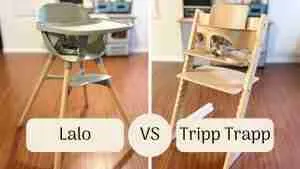
Lalo vs Stokke Tripp Trapp: Here is the clear winner
This is my detailed comparison of the Lalo vs Stokke Tripp Trapp high chair. The Lalo and the Stokke Tripp Trapp are two of the best high chairs that grow with your child.
